
Land Back: Indigenous Environmental Stewardship and the Path Forward
Indigenous peoples protect and conserve more land than world governments, but are rarely included in conservation plans.
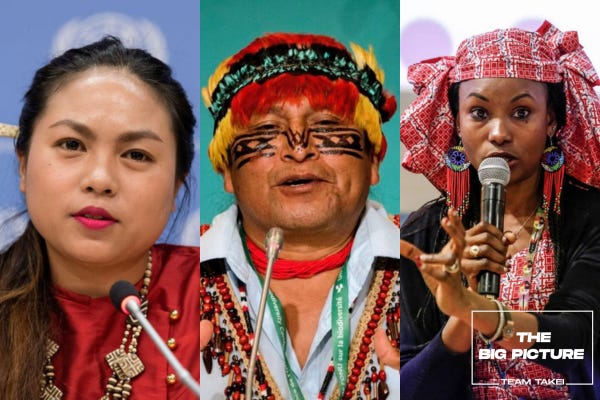
Indigenous peoples around the Earth serve an outsized role in the conservation of natural resources including land, water, flora, and fauna.
We make up only about 6 percent of the total global population, yet occupy, own or manage an estimated 20 to 25 percent of Earth’s land surface. The lands Indigenous peoples inhabit or maintain also hold most of Earth’s remaining biodiversity and intersect with about 40 percent of all protected areas and ecologically intact lands.
By comparison, protected areas established by government entities—such as national parks—account for 14% of the Earth's land mass.
Despite their role in protecting Earth’s biodiversity, Indigenous peoples have historically not been invited to participate, considered or consulted in matters of conservation—globally or locally.
Studies on Indigenous peoples’ traditional environmental stewardship versus state or private enterprise efforts indicated the entities with the highest levels of success had the lowest levels of input into climate change and environmental impact strategies.
But why would a civilized society ask primitive people for advice?

A growing awareness of the climate crisis we all find ourselves in finally prompted organizations like the United Nations to turn to Indigenous peoples for help. But critical to the future success of environmental protections were protections for Indigenous peoples themselves.
In 2007, the UN adopted the Declaration on the Rights of Indigenous Peoples (UNDRIP) with 144 member nations voting in favor.
In their Declaration, they noted:
“There are over 476 million Indigenous people living in 90 countries across the world, accounting for 6.2 percent of the global population. Of those, there are more than 5,000 distinct groups—speaking an overwhelming majority of the world’s estimated 7,000 languages.”
Indigenous peoples account for the majority of the Earth's cultural and linguistic diversity.
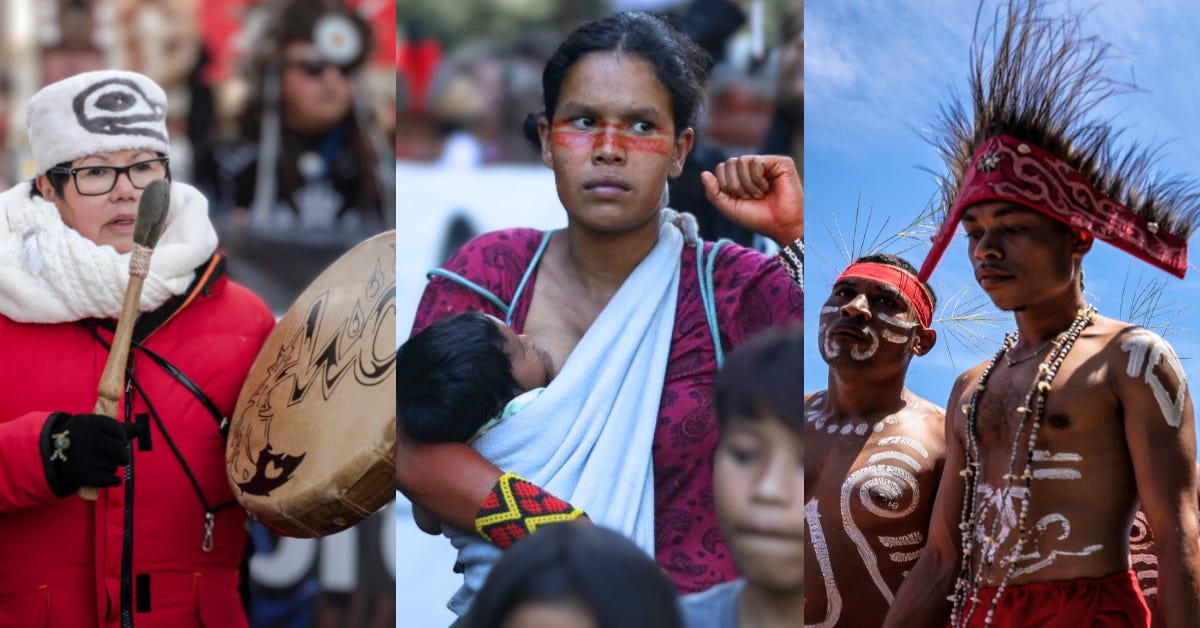
The lone votes against recognition of Indigenous rights came from four nations colonized by the British Empire—Australia, Canada, New Zealand and the United States.
All four countries have similar, well-documented histories of government mandated physical genocide and continuing issues of cultural genocide against their Indigenous populations as well as issues with White nationalist movements.
An additional 11 countries abstained—Azerbaijan, Bangladesh, Bhutan, Burundi, Colombia, Georgia, Kenya, Nigeria, Russian Federation, Samoa and Ukraine.
Since 2007, Australia, New Zealand, United States and Canada reversed their positions of opposition to Indigenous rights and expressed support for the Declaration on the Rights of Indigenous Peoples. Colombia and Samoa also changed their positions from abstention to endorsement leaving only 9 nations still undecided.
Environmental Activists Before It Was Cool
As part of UNDRIP, the United Nations noted:
“It is estimated that Indigenous peoples own and/or occupy approximately one quarter of the Earth’s surface. This land area holds most of the earth’s remaining biodiversity.”
But added:
“To develop appropriate conservation measures, Indigenous peoples must be equal partners throughout any processes that may affect their lands, territories and resources.”
“Conservation partnerships will only be successful if the rights, knowledge systems and practices of Indigenous peoples are fully acknowledged and included in conservation projects and plans to ensure environmental sustainability.”
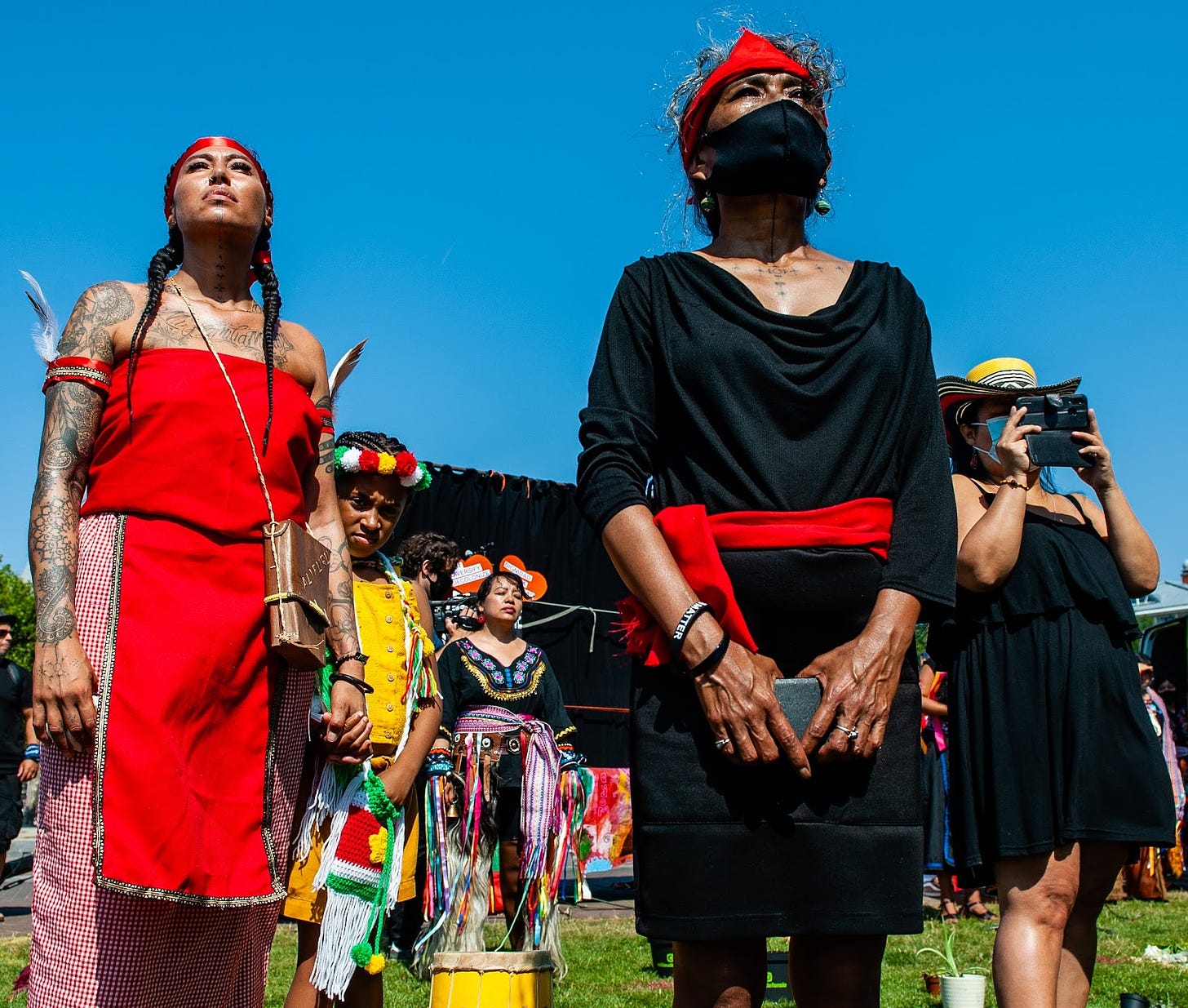
In 2019’s “conservation and the rights of Indigenous peoples” meeting, they further stated:
“Indigenous peoples have consistently expressed their concern with mainstream conservation efforts that frequently fail to consider the rights and knowledge of Indigenous peoples in the designation of conservation areas…”
“Indigenous peoples play a crucial role for conservation of the environment. However, Indigenous peoples’ custodianship of the environment and ecosystems, and their rights to land and natural resources are unrecognized.”
From 1980 to 2000, protected lands established by government entities nearly doubled from 3.4 million sq. miles (8.7 million sq. kms) to 6.2 million sq. miles (16.1 million sq kms). Which sounds like a good thing.
But where are these lands coming from?
Are uninhabited territories or undeveloped government controlled areas like national forests, deserts or wetlands being set aside for conservation? If they were, those areas would no longer be eligible for agricultural, grazing, deforestation, strip mining or fracking leases.
Leases for those environmentally detrimental practices are highly profitable.
So that's not the source of most of the new government protected lands.
The United Nations estimates 50 percent of protected areas worldwide were established by confiscating the traditional territories—lands and waters—of Indigenous peoples and evicting them. This proportion is even higher in the Americas where it may exceed 90 percent in Central America.
These lands—overseen for millennia by Indigenous peoples—are highly valued for conservation purposes. About 65 percent of Indigenous managed lands were never intensively developed compared with 44 percent of other lands eligible for protection.
In other words, 50 to 90 percent of new lands set aside by governments for conservation were confiscated from the Indigenous peoples who conserved it more successfully than other land stewards—including the government.
Which is a recipe for disaster rather than success.
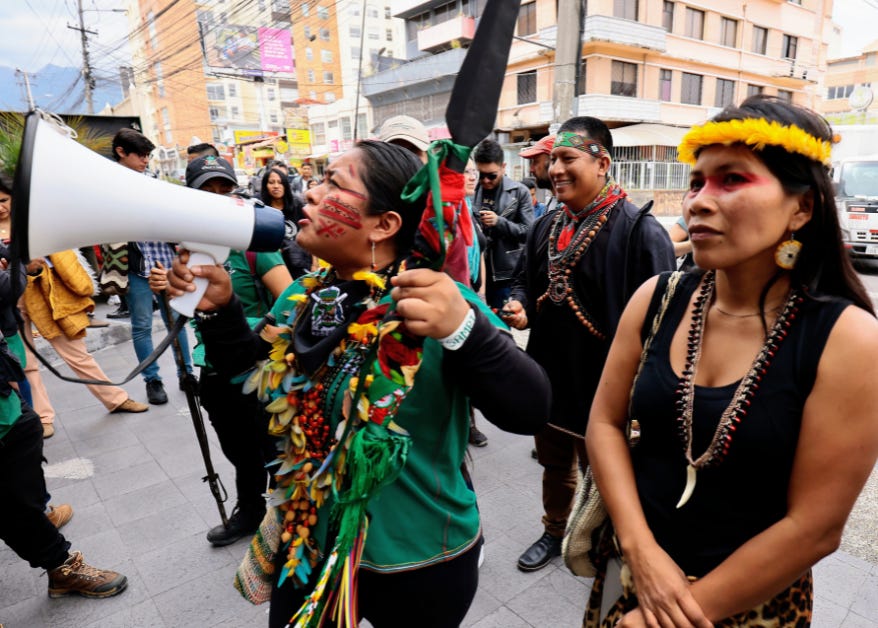
Indigenous peoples face the majority of the negative impacts from government and private conservation programs.
Most of these programs are based on the colonial concept of protecting resources by excluding or eliminating human beings. Art and artifacts from colonized or occupied countries were looted to preserve them in European museums or the private collections of monarchs, aristocrats or wealthy buyers.
But most natural resources can't be removed and locked away in museums or zoos. These biological treasures—flora, fauna, land, and water—will have the Indigenous peoples who successfully protected them for millennia removed under mainstream conservation models.
As noted by the United Nations:
“Since the creation of the first State-designated protected area, Yellowstone National Park, in the United States of America in 1872 and the subsequent Yosemite National Park in 1890 whereby the US government violently expelled Native Americans living in or dependent on the resources in the areas, conservation interventions around the world have far too often resulted in gross violations of the rights of Indigenous peoples, in particular to their rights to land and resources.”
“This includes forced displacement and evictions from their territories; criminalization and destruction of livelihoods; loss of rights to lands, waters and resources and sacred sites; violence and extrajudicial killings of environmental defenders.”
“Many Indigenous persons have been dispossessed and displaced due to the exclusionary approach of protected-area management built on the premise that human activities are incompatible with conservation.”

There's A Better Way
The empire builders of the Americas—Mayans, Aztecs and Incas—were well respected by early invaders and the later colonizers. These agrarian societies mimicked what Europeans were used to seeing—a patriarchal culture of acquisition at all costs.
These outside observers labeled any society they considered primitive as hunter/gatherer while a notable portion of Mesoamerica were agrarian. Many of these so-called primitive cultures were matrilineal and/or matriarchal, subsistence-based cultures.
The invaders and colonizers noted hunter/gatherer societies were subsistence-based—take what you need to survive—but discounted them as lacking in cultural advancement.
They didn't develop the acquisition tools necessary for widespread killing and conquest—advanced weaponry, agricultural tools for larger harvests to feed armies, roads and wheeled vehicles to move armies, etc...
Invaders and colonizers missed or ignored that these societies developed astronomical, mathematical, and linguistic knowledge that far surpassed their own.
For example, almost all of the Americas developed regional sign languages that allowed nuanced communication with their neighbors with different spoken languages—as well as with deaf or mute members of their own communities.
Plains sign language influenced ASL.
The invaders also had no context for matriarchal societies. Even modern scholars think matriarchy would look exactly like patriarchy, but with queens and empresses instead of kings and emperors.
Because men held positions of power, historians and anthropologists labeled all of the Indigenous societies of the Americas patriarchal and primitive.
Instead, matriarchy looks like the majority of Mesoamerica.
Subsistence-based, socialist democracies with arts and culture focused on life, not acquisition or conquest. No grand palaces or painted masterpieces, but intricate clothing embellishments, pottery, jewelry, textiles, basketry, etc...
All useful objects, but discounted as a sign of a lack of civilization by people who ascribe advancements made for more efficient killing and conquest as the only sign of sophistication.
Subsistence-based societies are more environmentally friendly than acquisition-based ones.
However, subsistence survival is difficult in an acquisition-based world where power and profits have always come before people.

What Can We Do Now?
First, let's look at an example of what's already been done.
One concerted effort by the United States government to eliminate Indigenous peoples involved the extinction of Pté Oyate—the Buffalo Nation. By the end of the 1800s, Indigenous Americans were either assimilated or confined to reservations.
A primary resource for a large number of tribes, the North American Bison, was also systematically slaughtered to further contain Indigenous peoples. The inability to hunt for the food, bedding, and clothing gleaned from a bison carcass left most plains tribes completely dependent on corrupt Indian Agents for their meager survival.
Death by starvation, exposure, and disease was rampant in the early years of reservation life.
Pté Oyate was an estimated 30-80 million animals roaming in three massive herds of plains bison and multiple smaller herds of the larger woodland bison. But by the end of the 19th century, only a few hundred bison remained.
The plains bison now number approximately 45,000 animals.
About 20,000 are managed by government and environmental organizations. Approximately 25,000 are managed by Indigenous nations who were integral to the reintroduction and preservation of all of the herds.
There's a joke that says if you see me running, you better run too.
For the climate crisis, if you see Indigenous peoples protesting against or advocating for something, you probably should too.
For example, throughout history, Indigenous peoples had successful strategies for dealing with seasonal wildfires on their homelands. They advocated for those practices to continue, but were either dismissed or discounted.
After decades of devastation, governments are now turning to their nations’ first inhabitants for advice.
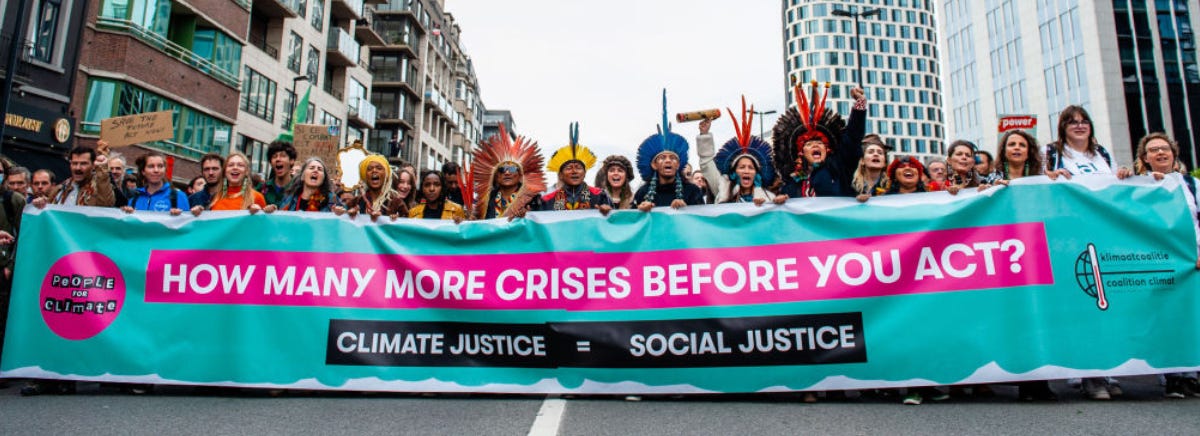
In the U.S. under Joe Biden, an Indigenous person was appointed to head the Department of the Interior (DoI)—Secretary Deb Haaland, Laguna Pueblo—which includes the Bureau of Land Management (BLM), National Park Service (NPS) and Bureau of Indian Affairs (BIA).
The Biden administration director of NPS—Chuck Sams—is also Indigenous. Sams is Cayuse and Walla Walla, an enrolled member of the Confederated Tribes of the Umatilla Indian Reservation and has blood ties to the Cocopah Tribe and Yankton Sioux of Fort Peck.
The NPS released new guidance in 2022 to improve federal stewardship of national park lands and waters by codifying and increasing the role of American Indian and Alaska Native Tribes, Alaska Native entities, and the Native Hawaiian Community in federal land management.
NPS Director Sams said:
“All national parks are located on Indigenous ancestral lands and this policy will help ensure Tribal governments have an equal voice in the planning and management of them. I have been an advocate for co-stewardship of federal lands for more than 27 years and I am pleased to see a national emphasis placed on this necessary work.”
“Through increased and collaborative engagement with Tribes, Alaska Native entities, and the Native Hawaiian Community, we will make better land management decisions, acknowledge and hopefully heal some deep wounds, benefit from Traditional Ecological Knowledge, and better interpret the history of the lands we administer and all the plants and animals that live in them.”
In addition to NPS, BLM and U.S. Fish and Wildlife Service also released co-stewardship policies, supporting an all-of-government approach to “inclusive and equitable federal land management.”
BLM manages more than 245 million acres of public land located primarily in 12 western states, including Alaska, and administers 700 million acres of sub-surface mineral estate throughout the nation.
All three agencies are part of Secretary Haaland's Interior Department.
In 2021 at the 26th United Nations Climate Change Conference of the Parties, Secretary Haaland stated:
“We need every person and every tool to address the twin challenges of the climate and biodiversity crises. And when we ensure that Indigenous people are at the table and part of the conversation, we all win.”
“If we are going to be successful in tackling climate change and addressing the biodiversity crisis, we have to empower the original stewards of the land.”
Haaland added:
“President Biden’s America the Beautiful initiative is a bold call to action to conserve and restore America’s lands and waters for the benefit of all people.”
“It is a visionary effort that is inclusive, collaborative, builds upon our important relationships with Indigenous peoples and can serve as a model to other nations to unify diverse communities to help confront the climate crisis.”
In the Pacific Northwest, tribes have worked for decades to restore inland fisheries by eliminating unnecessary dams and performing river cleanups.
Tribes have also used their money to buy back their ancestral lands from private owners and, in some cases, the very governments that confiscated them.
One significant action NPS took was to establish free access to federal parks and other protected lands for Indigenous citizens.
These lands were almost exclusively set aside by treaties with the United States as belonging to tribal nations, but then were taken via BIA transfers to BLM and NPS without approval of the tribes to create parks, national forests, and monuments.
Making people pay to visit the land you stole from them in violation of legally binding treaties was a longstanding slap in the face to Indigenous Americans.
Biodiversity is also a priority.
Across the globe, Indigenous peoples are cultivating crops, curating seed banks and planting forests to promote and preserve biodiversity.
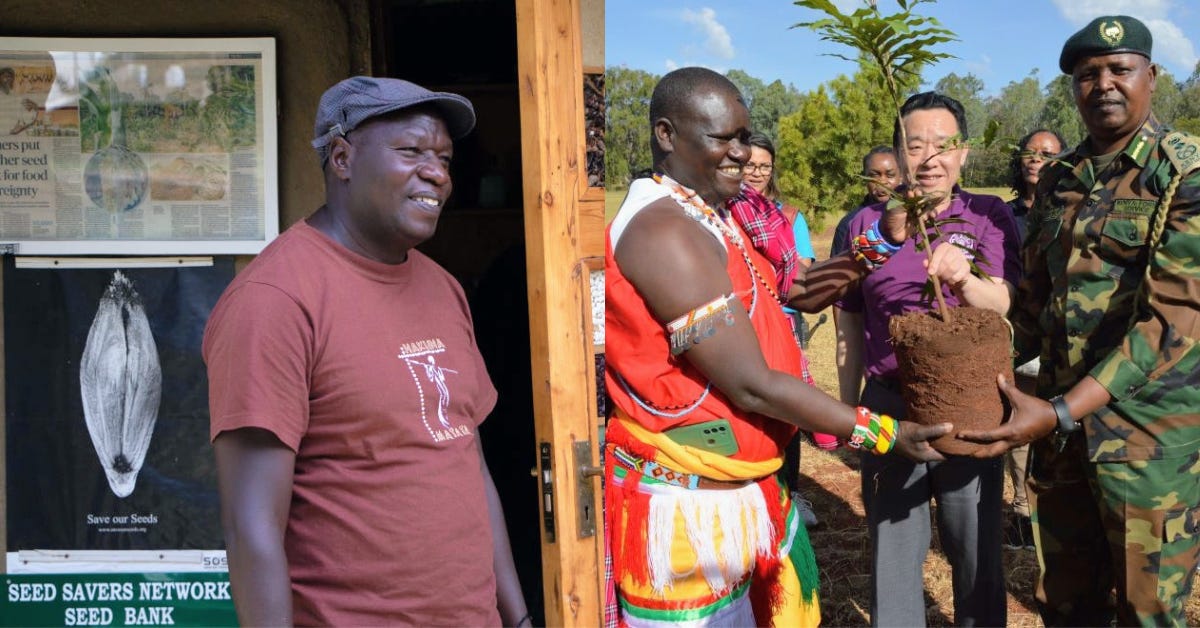
Indigenous, heirloom seeds are an important safeguard against future food shortages caused by fungal blights, diseases and climate change.
Diversity in forests guards against the same dangers. Trees are critical to planetary survival.
Traditional crop varieties and wild Indigenous flora are essential to developing crops resilient to changing climates. The “one seed suits all” mentality of corporate agriculture is great for the seed owner's profits, but is a path to global famines and flora extinction.
Land Back is another movement that is growing in momentum.
It advocates for lands confiscated from Indigenous stewardship to be returned.
It makes little sense for conscientious caretakers to be removed from lands they've protected for millennia for the purpose of protecting that land.
In March, Minnesota returned over 1,000 acres once taken for a state park to the Upper Sioux community.
Cooperative stewardship is another path forward.
In 2024, the Biden administration announced the final Public Lands Rule “providing tools for the Bureau of Land Management (BLM) to help improve the health and resilience of public lands in the face of a changing climate; conserve important wildlife habitat and intact landscapes; facilitate responsible development; and better recognize unique cultural and natural resources on public lands.”
“Building on decades of land management experience and emphasizing the use of science and data, including Indigenous Knowledge, to guide balanced decision-making, the rule applies the existing fundamentals of land health across BLM programs, establishes restoration and mitigation leases, and clarifies practices to designate and protect Areas of Critical Environmental Concern (ACECs).”
“The rule will help to ensure the BLM continues to protect land health while managing other uses of the public lands, such as clean energy development and outdoor recreation.”
More of that, please.
Uŋčí Makȟá kiŋ tȟokáta wičhóuŋčhaǧe kiŋ uŋkíčikpataŋpi kte héčha—We have to save Grandmother Earth for future generations.
~~~~~~~~~~










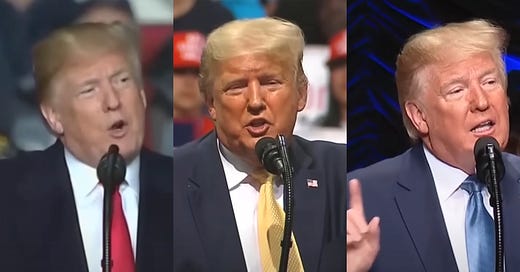



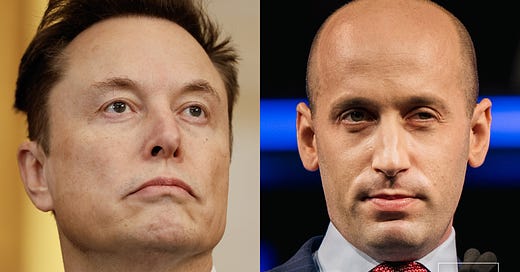

Philámayaye, Niawen'kó:wa, Thank you—I always find myself singing that to the tune of Cabaret's "Willkommen, Bienvenue, Welcome"—I greatly appreciate all the likes, shares, subscriptions, and comments.
If you're traveling in the United States this year, you can support Indigenous peoples and get a great cultural experience through the NativeAmerica.Travel cooperative of Indigenous American, Alaska Native and Native Hawaiian organizations.
https://nativeamerica.travel/
Thank you for this. I have not seen such a succinct and thorough article detailing the issues and the solutions, and I was not aware of all of these efforts.